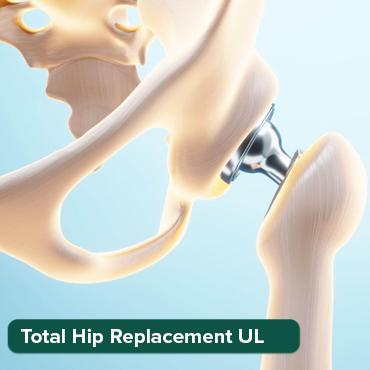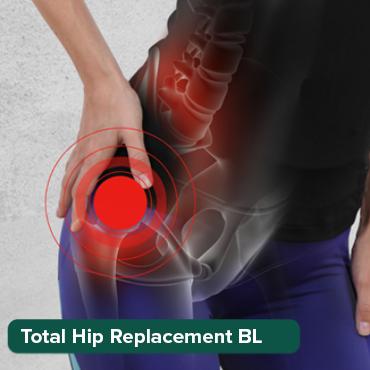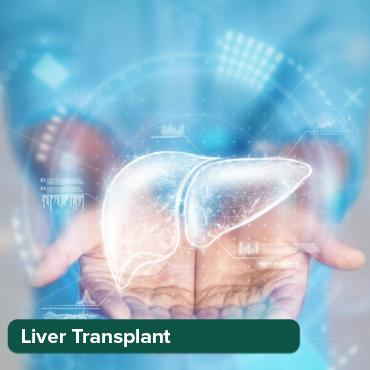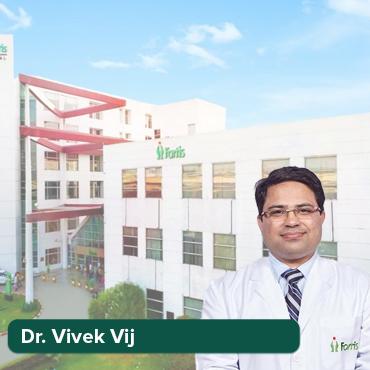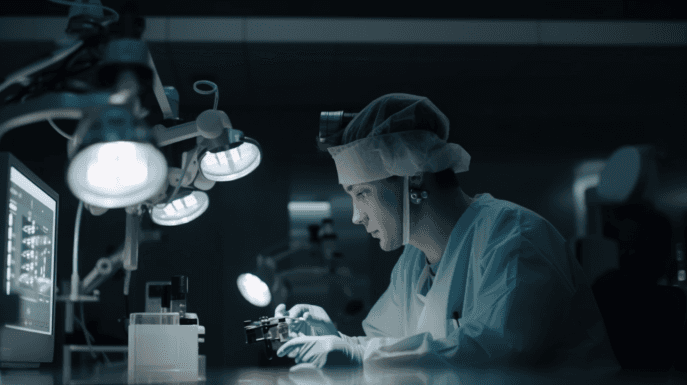
استكشاف جراحات السرطان طفيفة التوغل المتوفرة في دولة الإمارات العربية المتحدة
17 Jul, 2024
 فريق هيلث تريب
فريق هيلث تريبنظرة عامة على إجراءات جراحة السرطان الغازية الحد الأدنى
تستخدم جراحات السرطان طفيفة التوغل تقنيات وتقنيات متقدمة لعلاج السرطان مع صدمة أقل للجسم مقارنة بالعمليات الجراحية المفتوحة التقليدية. فيما يلي نظرة عامة على الإجراءات الجراحية البسيطة الشائعة المستخدمة في علاج السرطان:
1. جراحة المناظير
تتضمن الجراحة بالمنظار استخدام منظار البطن، وهو أنبوب رفيع مزود بكاميرا وضوء في نهايته، يتم إدخاله من خلال شقوق صغيرة في البطن. يمكن للجراحين مشاهدة الجزء الداخلي من الجسم على مراقبة وأجر الجراحة باستخدام أدوات خاصة.
الإجراءات الأكثر شعبية في الهند
الاستخدامات الشائعة:
العلاجات الصحية
امنح نفسك الوقت للاسترخاء
أقل الأسعار مضمونة!

أقل الأسعار مضمونة!
- سرطان قولوني مستقيمي
- السرطانات النسائية (المبيض، الرحم)
- سرطانات الجهاز الهضمي (المعدة، البنكرياس)
- سرطانات المسالك البولية (الكلى، البروستاتا)
إجراءات الجراحة بالمنظار
الجراحة بالمنظار هي إجراء طفيف التوغل يستخدم في العديد من جراحات البطن. فيما يلي نظرة عامة مفصلة عن الإجراء خطوة بخطوة:
1. الشقوق: قطع صغيرة، عادة بين 0.5 إلى 1 سم ، مصنوعة في منطقة البطن. هذه الفتحات الصغيرة كافية للسماح بدخول الأدوات الجراحية والمنظار للبطنات.
2. إدراج المنظار: يتم إدخال منظار البطن ، وهو أنبوب رفيع مع كاميرا وضوء في النهاية ، من خلال أحد هذه الشقوق الصغيرة. هذا يتيح للجراح رؤية داخل البطن على شاشة عالية الدقة.
3. غاز غاز: يتم ضخ غاز ثاني أكسيد الكربون (CO2) بلطف في البطن من خلال أحد الشقوق. يؤدي هذا إلى تضخيم المنطقة، مما يخلق مساحة أكبر بين الأعضاء ويمنح الجراح رؤية أوضح ومساحة أكبر للمناورة.
4. الأدوات الجراحية: يتم إدراج أدوات خاصة مثل Graspers والمقص والتشريح من خلال الشقوق الصغيرة الأخرى. تساعد هذه الأدوات في التعامل مع الأنسجة وأداء المهام الضرورية، كل ذلك تحت إشراف منظار البطن.
5. إزالة الورم: من خلال منظار البطن الذي يوفر رؤية مكبرة، يقوم الجراح بإزالة الورم وأي نسيج مجاور يحتاج إلى استئصاله بعناية. يساعد هذا النهج الدقيق في حماية الأنسجة الصحية من حوله.
6. إنهاء: بمجرد الانتهاء من الإجراء ، يتم إغلاق الشقوق الصغيرة مع الغرز أو المواد الغذائية. عادة ما تكون هذه عمليات الإغلاق صغيرة ، مما يؤدي إلى ندبات أقل مقارنة بالعمليات الجراحية المفتوحة التقليدية.
فوائد جراحة المنظار
شقوق أصغر وتندب أقل: استخدام الشقوق الصغيرة يقلل من الندوب المرئية والصدمات إلى عضلات البطن والجلد.
انخفاض الألم والشفاء أسرع: المرضى الذين يخضعون لجراحة بالمنظار غالبًا ما يعانون من آلام وعدم الراحة بعد الجراحات المفتوحة أقل مقارنة بالجراحات المفتوحة. تساهم الشقوق الأصغر في أوقات التعافي بشكل أسرع وقد تقلل من الحاجة إلى أدوية الألم.
انخفاض خطر حدوث مضاعفات: نظرًا لطبيعة الجراحة بالمنظار ذات الحد الأدنى من التدخل الجراحي، هناك خطر أقل لحدوث مضاعفات مثل الالتهابات والنزيف والفتق.
توفر جراحة التنظير البطن مزايا كبيرة على العمليات الجراحية التقليدية المفتوحة ، مما يوفر للمرضى خيارات علاجية فعالة لمختلف ظروف البطن مع تعزيز الانتعاش بشكل أسرع وتحسين النتائج الشاملة.
\
2. الجراحة بمساعدة الروبوتية
تستخدم الجراحة بمساعدة الآلية أنظمة آلية ، مثل نظام Da Vinci الجراحي ، لإجراء إجراءات دقيقة ومعقدة. يتحكم الجراح في الأذرع الآلية من وحدة التحكم، والتي توفر رؤية ثلاثية الأبعاد عالية الوضوح لموقع الجراحة.
الاستخدامات الشائعة:
- سرطان البروستات
- السرطانات النسائية
- سرطان قولوني مستقيمي
- سرطان الرئة
- سرطانات الرأس والرقبة
إجراءات الجراحة بمساعدة الروبوتية
تتضمن الجراحة بمساعدة الروبوتية استخدام أنظمة روبوتية متقدمة لإجراء عمليات جراحية دقيقة بأقل تدخل جراحي. إليك مخطط تفصيلي للإجراء:
1. الشقوق: لهذا النوع من الجراحة ، يتم إجراء عدد قليل فقط من التخفيضات الصغيرة ، عادة بين 0.5 إلى 1 سم. هذه الفتحات الصغيرة كبيرة بما يكفي لأدوات الروبوتية والكاميرا لإدراجها.
2. يثبت: تم وضع الأذرع الآلية المجهزة بالأدوات الجراحية وكاميرا عالية الدقة فوقك بعناية. يسيطر الجراح على هذه الأسلحة من وحدة تحكم في غرفة العمليات ، وتشغيلها عن بعد.
3. مراقبة الجراح: وفي وحدة التحكم، يستخدم الجراح أدوات التحكم اليدوية والقدمية لتوجيه الأذرع الآلية بدقة مذهلة. توفر وحدة التحكم عرضًا ثلاثي الأبعاد مكبدي للمنطقة التي يتم العمل عليها ، مما يسهل رؤيته والتلاعب به.
4. جراحة: ثم يستخدم الجراح الأذرع الآلية لإجراء الجراحة، سواء كانت إزالة الأورام أو الأنسجة المتضررة الأخرى. يسمح النظام الآلي بحركات دقيقة ودقيقة لا يمكن للطرق التقليدية مطابقتها.
5. انتهاء: بعد اكتمال الجراحة، تتم إزالة الأذرع الروبوتية بعناية، ويتم إغلاق الشقوق الصغيرة بغرز أو دبابيس.
فوائد الجراحة بمساعدة الآلية
دقة أكبر والسيطرة: يعزز النظام الآلي قدرة الجراح على إجراء مناورات معقدة بدقة متزايدة، مما يؤدي إلى نتائج جراحية أكثر دقة.
تعزيز التصور للمنطقة الجراحية: توفر الكاميرا عالية الوضوح رؤية مفصلة ومكبرة لموقع الجراحة، مما يسمح برؤية أفضل للأنسجة والهياكل.
قلل من فقدان الدم والشفاء بشكل أسرع: بسبب الحركات الدقيقة والشقوق الأصغر ، غالبًا ما تؤدي الجراحة بمساعدة الروبوتية إلى فقدان في الدم أثناء العملية. هذا يمكن أن يسهم في وقت التعافي بشكل أسرع وتقليل الحاجة إلى دواء الألم بعد العملية الجراحية.
تمثل الجراحة بمساعدة الآلية تقدمًا كبيرًا في التقنيات الجراحية ، مما يوفر للمرضى فوائد الحد الأدنى من الغزو ، وتقليل أوقات الشفاء ، وتحسين النتائج الجراحية. تستمر هذه التكنولوجيا في التطور ، مما يوسع تطبيقاتها عبر مختلف التخصصات الجراحية لتزويد المرضى بأعلى مستوى رعاية.
3. جراحة التنظير الصدري بمساعدة الفيديو (أقواس)
ضريبة القيمة المضافة هي نوع من الجراحة طفيفة التوغل المستخدمة لتشخيص وعلاج حالات الصدر، بما في ذلك سرطان الرئة. وهو ينطوي على استخدام منظار الصدر، وهو عبارة عن كاميرا صغيرة يتم إدخالها من خلال جدار الصدر.
الاستخدامات الشائعة:
- سرطان الرئة
- سرطان المريء
- أورام المنصف
وفيما يلي نظرة عامة خطوة بخطوة على الإجراء:
1. الشقوق: بضع قطع صغيرة، عادة بين 0.5 إلى 1 سم، مصنوعة في جدار الصدر. هذه الفتحات الصغيرة كافية لاستيعاب الأدوات اللازمة للجراحة.
2. إدخال منظار الصدر: يتم إدخال منظار الصدر ، وهو أنبوب رفيع مع كاميرا وضوء ، من خلال أحد هذه الشقوق الصغيرة. يتيح ذلك للجراح رؤية ما بداخل تجويف الصدر على شاشة عالية الوضوح.
3. الأدوات الجراحية: يتم إجراء شقوق صغيرة إضافية لإدخال الأدوات الجراحية المتخصصة. تساعد هذه الأدوات الجراح على إجراء حركات دقيقة وتحكم أفضل أثناء الإجراء.
4. إزالة الورم: مع منظار الصدر والأدوات في مكانها ، يقوم الجراح بإزالة الورم بعناية وأي أنسجة متأثرة. يساعد هذا النهج المركّز على حماية الأنسجة السليمة المحيطة به.
5. إنهاء: بعد العملية، يتم إغلاق الشقوق الصغيرة بغرز أو دبابيس. بفضل الشقوق الصغيرة، تكون الندبات ضئيلة مقارنة بالعمليات الجراحية المفتوحة التقليدية.
فوائد جراحة تنظير الصدر بمساعدة الفيديو (VATS)
شقوق أصغر وتقليل الندبات: يؤدي استخدام الشقوق الصغيرة إلى ندبات أقل وضوحًا وتقليل الصدمات إلى جدار الصدر والأنسجة المحيطة بها.
انخفض ألم ما بعد الجراحة: عادة ما يعاني المرضى من ألم وعدم الراحة بعد الحمامات بسبب الشقوق الأصغر وخفض صدمة الأنسجة.
أقصر إقامة في المستشفى والتعافي أسرع: غالبًا ما يسمح Vats بإقامة أقصر في المستشفى مقارنة بالعمليات الجراحية المفتوحة التقليدية. قد يتعافى المرضى أيضًا بسرعة أكبر والعودة إلى الأنشطة العادية عاجلا.
4. الجراحة بالمنظار
تتضمن الجراحة بالمنظار استخدام منظار داخلي ، وأنبوب مرن مع كاميرا وضوء ، يتم إدخاله من خلال فتحات الجسم الطبيعية أو الشقوق الصغيرة. يستخدم عادة لسرطان الجهاز الهضمي.
الاستخدامات الشائعة:
- سرطانات الجهاز الهضمي في المرحلة المبكرة (المريء ، المعدة ، القولون والمستقيم)
- بعض أنواع سرطانات الرئة
إجراءات الجراحة بالمنظار
تستخدم الجراحة بالمنظار التكنولوجيا المتقدمة لإجراء إجراءات غازية الحد الأدنى من خلال فتحات الجسم الطبيعية أو الشقوق الصغيرة. وفيما يلي نظرة عامة مفصلة عن الإجراء:
1. إدخال المنظار: يبدأ الإجراء بإدخال منظار داخلي ، وهو أنبوب مرن مع كاميرا وضوء ، من خلال الفم أو فتحة الشرج أو شق صغير.
2. التصور: ترسل الكاميرا الموجودة على المنظار صورًا حية للأعضاء أو الهياكل الداخلية إلى الشاشة. هذا يساعد الجراح على رؤية بالضبط ما يجري في الداخل والتنقل في المنطقة الجراحية بدقة.
3. الأدوات الجراحية: يتم ربط الأدوات الجراحية الصغيرة مثل المقص أو الملقط أو الليزر عبر القنوات في المنظار. يستخدم الجراح هذه الأدوات لإجراء الجراحة أثناء عرض الصور المكبرة على الشاشة.
4. إزالة الورم: مع وجود المنظار والأدوات في مكانها ، يقوم الجراح بعناية بإزالة الورم وأي أنسجة قريبة يجب إخراجها. يساعد هذا النهج الدقيق على تجنب الأضرار غير الضرورية للأنسجة السليمة.
5. انتهاء: بعد إزالة الورم واكتملت الجراحة ، يتم سحب المنظار والأدوات بعناية. يتم إغلاق أي شقوق صغيرة يتم إجراؤها بغرز أو تترك للشفاء من تلقاء نفسها.
فوائد الجراحة بالمنظار
لا شقات كبيرة: تتجنب الجراحة بالمنظار الحاجة إلى الشقوق الجراحية الكبيرة ، مما يقلل من الصدمة في الجسم ويقلل من الندبات.
انخفاض الألم والتعافي بشكل أسرع: عادة ما يعاني المرضى من ألم بعد العملية الجراحية وعدم الراحة مقارنة بالجراحات المفتوحة التقليدية. تساهم الشقوق الصغيرة أيضًا في تسريع أوقات التعافي.
انخفاض خطر حدوث مضاعفات: نظرًا لطبيعة الجراحة بالمنظار ذات الحد الأدنى من التدخل الجراحي، هناك خطر أقل لحدوث مضاعفات مثل الالتهابات والنزيف الزائد.
توفر الجراحة بالمنظار بديلاً أقل توغلاً لعلاج حالات مختلفة ، بما في ذلك سرطانات المرحلة المبكرة وغيرها من اضطرابات الجهاز الهضمي أو الجهاز التنفسي. يعمل هذا النهج الجراحي المتقدم على تحسين نتائج المرضى من خلال تعزيز الشفاء بشكل أسرع وتقليل أوقات التعافي وتعزيز الراحة العامة خلال فترة التعافي.
فوائد جراحات السرطان الغازية الحد الأدنى
أحدثت جراحات السرطان طفيفة التوغل ثورة في مجال علاج الأورام، حيث قدمت العديد من المزايا مقارنة بالعمليات الجراحية المفتوحة التقليدية. فيما يلي بعض الفوائد الرئيسية التي تجعل التقنيات الغازية الحد الأدنى خيارًا مفضلاً للعديد من المرضى ومقدمي الرعاية الصحية:
1. انخفاض الألم والانزعاج
أ. شقوق أصغر: فكر في الإجراءات ذات التدخل الجراحي البسيط باعتبارها جراحًا ماهرًا يفضل استخدام الجروح الصغيرة بدلاً من الجروح الكبيرة. يعني هذا النهج أن جسمك يمر بصدمات أقل، وبالتالي ستشعر في النهاية بألم وانزعاج أقل.ب. شفاء أسرع: نظرًا لوجود ضرر أقل لأنسجتك ، يمكن أن يعود جسمك بشكل أسرع. يُترجم هذا إلى ألم أقل بعد الإجراء ولن تحتاج إلى عدد كبير من مسكنات الألم حتى تتعافى.
2. أوقات التعافي أسرع
أ.إقامة أقصر في المستشفى: إذا كنت ستخضع لعملية جراحية طفيفة التوغل، فمن المحتمل أن تجد نفسك عائداً إلى المنزل بشكل أسرع من الجراحة المفتوحة التقليدية. إنه مثل الحصول على تصريح خروج سريع حتى تتمكن من العودة إلى حياتك اليومية في وقت أقرب.ب. عودة أسرع إلى الأنشطة اليومية: مع فترة استرداد أقصر ، ستعود إلى روتينك المعتاد والعمل والهوايات المفضلة في أي وقت من الأوقات. الأمر كله يتعلق بالعودة إلى الأشياء التي تحبها والاستمتاع بالحياة بسرعة أكبر.
3. انخفاض خطر الإصابة بالمضاعفات
أ. انخفاض خطر الإصابة: نظرًا لأن الشقوق أصغر ، فهناك فرصة أقل للحصول على عدوى بعد الجراحة. إنه فوز كبير ، لا سيما بالمقارنة مع الجروح الأكبر التي تأتي مع العمليات الجراحية التقليدية.ب. قلل من فقدان الدم: مع تقنيات التدخل الجراحي البسيط، عادةً ما تفقد كمية أقل من الدم أثناء الجراحة. وهذا يعني فرصًا أقل للحاجة إلى نقل الدم والمضاعفات التي قد تصاحب ذلك.
4. الحد الأدنى من التندب
أ. فوائد التجميل: إحدى المزايا الرائعة للجراحة طفيفة التوغل هي الشقوق الصغيرة التي تؤدي إلى ندبات أقل وضوحًا. يمكن أن يعزز هذا حقًا تقديرك لذاتك وكيف تشعر حيال جسمك.ب. ضرر أقل للأنسجة: من خلال الحفاظ على سلامة المزيد من الأنسجة السليمة، لا تساعد هذه التقنيات على تقليل الندبات فحسب، بل تدعم أيضًا الشفاء بشكل أسرع وأفضل بشكل عام.
3. تعزيز الدقة والتحكم
أ. التكنولوجيا المتقدمة: توفر تقنيات مثل الجراحة بمساعدة الروبوت للجراحين قدرًا أكبر من الدقة والتحكم. هذا يسمح بإزالة أكثر دقة للأنسجة السرطانية مع الحفاظ على الهياكل المحيطة الصحية.ب. نتائج أفضل: تؤدي الدقة والتحكم المعززة إلى نتائج جراحية أفضل ، بما في ذلك ارتفاع معدلات النجاح وانخفاض معدلات التكرار للسرطان.
4. تحسين الصحة على المدى الطويل
أ. انخفاض معدلات التكرار: تعتبر تقنيات التدخل الجراحي البسيط فعالة جدًا في استهداف الأنسجة السرطانية وإزالتها. وهذا يمكن أن يؤدي إلى انخفاض فرص عودة السرطان وتحسين الصحة على المدى الطويل للمرضى.ب. الحفاظ على وظيفة الأعضاء: تم تصميم هذه العمليات الجراحية لتسبب الحد الأدنى من الضرر للأنسجة والأعضاء المجاورة. وهذا يعني أن أعضائك تظل أكثر صحة وتعمل بشكل أفضل، وهو أمر مهم حقًا لرفاهيتك بشكل عام.
باختصار، توفر جراحات السرطان طفيفة التوغل مجموعة من الفوائد التي تعزز راحة المريض، وتقلل من أوقات التعافي، وتحسن النتائج الجراحية. تمثل هذه التقنيات المتقدمة خطوة مهمة إلى الأمام في مجال علم الأورام ، مما يوفر للمرضى خيارات علاجية فعالة وأقل غزوًا تعطي الأولوية لرفاههم وجودة الحياة.
أفضل المستشفيات التي تقدم جراحات السرطان طفيفة التوغل في دولة الإمارات العربية المتحدة
تعد Burjeel Medical City وجهة كبيرة لرعاية السرطان الشاملة ، والتي تتميز بمجموعة واسعة من الخيارات الجراحية الغازية الحد الأدنى. إنها مجهزة بأنظمة جراحية آلية متقدمة ولديها فريق من أطباء الأورام والجراحين ذوي الخبرة على استعداد لتوفير رعاية من الدرجة الأولى.
- الجراحة بمساعدة الروبوتية: الإجراءات الدقيقة لسرطان البروستاتا ، القولون والمستقيم ، وأمراض النساء.
- جراحة المناظير: خيارات أقل غزوًا لسرطانات الجهاز الهضمي والمسالك البولية.
الفوائد.
- سنة التأسيس: 2012
- الموقع: شارع 28 - مدينة محمد بن زايد - أبوظبي - دولة الإمارات العربية المتحدة، الإمارات العربية المتحدة
عن المستشفى:
- إجمالي عدد الأسرة: 180سرير وحدة العناية المركزة: 31 (بما في ذلك 13 سرير وحدة العناية المركزة لحديثي الولادة و18 سرير وحدة العناية المركزة للبالغين)
- أجنحة المخاض والولادة: 8
- غرف العمليات: 10 (بما في ذلك غرفة العمليات الهجينة الحديثة)
- أسرة الرعاية النهارية: 42
- أسرة غسيل الكلى: 13
- أسرة التنظير: 4
- أسرة التلقيح الاصطناعي: 5
- أو أسرة الرعاية النهارية: 20
- أسرة الطوارئ: 22
- غرف المرضى الفردية: 135
- 1.5 & 3.0 تسلا التصوير بالرنين المغناطيسي والمسح المقطعي 64 شريحة
- الأجنحة الفاخرة: الأجنحة الملكية: 6000 قدم مربع. قدم. كل
- الأجنحة الرئاسية: 3000 قدم مربع. قدم.
- أجنحة ماجستيك
- الأجنحة التنفيذية
- الرائدة
- تم تصميمه ليكون مركزًا لعلاج الأورام من المستوى الثالث والرباعي.
- متخصص في التخصصات الفرعية للبالغين والأطفال، والرعاية طويلة الأمد، والرعاية التلطيفية.
- يقدم العلاج المناعي والعلاجات المستهدفة جزيئيًا.
- يوفر أحدث التشخيص والعلاج الرحيم.
- يقدم خدمات دعم استثنائية للمرضى وأسرهم.
- بورجل تقدم المدينة الطبية في أبو ظبي رعاية وخبرة متقدمة في أمراض القلب ، طب الأطفال ، طب العيون ، علم الأورام ، التلقيح الاصطناعي ، أمراض النساء ، التوليد وجراحة العظام والطب الرياضي وكتف مخصص و وحدة الأطراف العلوية ، مركز بورجل الأوعية جراحة. يوفر هذا المستشفى الحديثة شاملة ، خدمات الرعاية الصحية عالية الجودة للمرضى ، لضمان فريدة من نوعها تلتقي الاحتياجات الطبية بأعلى مستوى من الرعاية والخبرة. تلتزم Burjeel Medical City بتوفير رعاية طبية عالية الجودة في بيئة مريحة ومتقدمة من الناحية التكنولوجية.
2. مستشفى ميديكلينيك المدينة
مستشفى مدينة Mediclinic في طليعة جراحات السرطان الغازية في دبي في دبي. تم تجهيز قسم الأورام الخاص بهم بأحدث التقنيات وفريق من الجراحين المهرة المخصصين لتوفير رعاية ممتازة.
- جراحة المناظير: علاجات سرطانات القولون والمستقيم والمعدة والمبيض.
- جراحة بالمنظار: إجراءات سرطانات الجهاز الهضمي في المرحلة المبكرة.
مزايا.
- سنة التأسيس: 2008
- الموقع: 37 شارع 26 - أم هرير 2 - مدينة دبي الطبية، دبي، الإمارات العربية المتحدة
عن المستشفى
- Mediclinic مستشفى المدينة هو منشأة للرعاية الصحية الحديثة. وهي مجهزة.
- عدد الأسرة: 280
- عدد الجراحين: 3
- يضم المستشفى 80 طبيبًا وأكثر من 30 متخصصًا.
- أسرة حديثي الولادة: 27
- غرف العمليات: 6، بالإضافة إلى 3 وحدات للجراحة النهارية، ووحدة واحدة للعمليات القيصرية
- مختبرات قسطرة القلب: 2
- أجنحة التنظير، ومختبر مجهز بالكامل، وقسم طوارئ، وأجنحة للعمل وما بعد الولادة.
- التكنولوجيا الطبية المتقدمة: PET/CT، SPECT CT، والتصوير بالرنين المغناطيسي 3T.
- ال يقدم المستشفى علاجًا متخصصًا في مناطق مثل أمراض القلب ، الأشعة ، أمراض النساء ، الصدمة ، الطب النووي ، علم الغدد الصماء ، وأكثر من ذلك.
- يقدم مستشفى مدينة Mediclinic تخصصات في أمراض المسالك البولية ، علم الأعصاب ، أمراض النساء ، الجراحة العامة ، أمراض الجهاز الهضمي ، ه.ن.تي، الأمراض الجلدية، أمراض القلب، الأورام، جراحة العظام.
3. المستشفى الألماني السعودي ، دبي
مستشفى الألماني السعودي في دبي معترف به لرعاية السرطان عالية الجودة. تم تجهيز قسم الأورام الخاص بهم بتقنيات جراحية متقدمة وجراحين ذوي خبرة.
- العمليات الجراحية بالمنظار والروبوتية: رعاية شاملة لسرطانات المسالك البولية وأمراض النساء والجهاز الهضمي.
- جراحات الرأس والرقبة الغازية الحد الأدنى: العلاجات المستهدفة لسرطان الغدة الدرقية وسرطان الرأس والرقبة الأخرى.
الاكراميات؟ الشقوق الأصغر تؤدي إلى الحد الأدنى.
- سنة التأسيس - 2012
- موقع
المستشفى ملخص
- سعودي). بدأت عملياتها في مارس 2012 وهو المستشفى السادس للرعاية الثلاثية لمجموعة SGH. عدد الأسرة: 300 (ICU-47)
- عدد الجراحين: 16
- 24 أسرة العناية المركزة للبالغين، و12 سريرًا لوحدة العناية المركزة للأطفال، و11 سريرًا لوحدة العناية المركزة للأطفال.
- 6 غرف عمليات مزودة بمرافق تعمل على مدار الساعة طوال أيام الأسبوع (4 غرف العمليات الرئيسية، وواحدة للعمليات القيصرية، وواحدة كغرفة للصرف الصحي).
- 2 مختبرات قسطرة حديثة تغطي تدخلات الأوعية الدموية والدماغية والقلبية.
- 10 أسرة تحت وحدة غسيل الكلى مع خدمة 24 ساعة
- 28 أسرة ED تغطي خدمات 24/7 وهي الأكبر في القطاع الخاص.
- توفر غرف عزل بسعة 8 أسرة (ضغط سلبي) و 4 أسرة علاج كيميائي (ضغط إيجابي).
- صيدلية الطوارئ والعيادات الخارجية تعمل على مدار الساعة طوال أيام الأسبوع.
- الأشعة مع مرافق 24/7.
- 106 غرف خاصة و8 غرف لكبار الشخصيات.
- الشهادة الذهبية للتميز في الرعاية المرتكزة على المريض من Planetree International-USA.
- SGH تم منح مركز دبي للعلاج الطبيعي وإعادة التأهيل كارف (لجنة اعتماد مرافق إعادة التأهيل) الدولية الاعتماد الاكاديمي.
- معتمدة من قبل JCI (اللجنة المشتركة دولي) ، CAP (كلية علماء الأمراض الأمريكية) ، و ISO 14001 ، مع شهادة برنامج الرعاية السريرية (CCPC) لعضلة القلب الحادة جلطه.
- مختبر معتمد من CAP مجهز بالكامل.
- في خط مع رؤية دبي لتأسيس نفسها كقوة واحدة وجهة لجميع الاحتياجات الطبية ، تسهل SGH السياحة الطبية بواسطة توفير حزم رعاية طبية شاملة في الإمارات العربية المتحدة. المستشفى لديه موظفون متعدد اللغات يمكنهم مساعدة المرضى في لغتهم ، و مساعدة في الإقامة المحلية وحجوزات الطيران.
4. مستشفى زليخة
- سنة التأسيس - 2004
- الموقع: شارع الدوحة، النهضة 2، القصيص، دبي، الولايات المتحدة.أ. E., الإمارات العربية المتحدة
المستشفى ملخص
- أسسها د. زليخة داود في منتصف الستينيات
- بدأت كحلم لتوفير المرافق الطبية بأسعار معقولة
- تطورت لتصبح شبكة من المستشفيات في الإمارات العربية المتحدة والبحرين وعمان
- عدد الأسرة: 140
- عدد أسرة العناية المركزة: 10
- غرف العمليات: 3
- بدأت كحلم لتوفير المرافق الطبية بأسعار معقولة
- تطورت لتصبح شبكة من المستشفيات في الإمارات العربية المتحدة والبحرين وعمان
- يقدم رعاية للمرضى الداخليين والخارجيين مع مجموعة واسعة من التخصصات
- مراكز التميز في أمراض القلب والجراحة التجميلية والجراحة العامة والأورام وطب العيون وجراحة العظام والمسالك البولية
- متخصص تشمل الخدمات مختبر قسطرة القلب ، مكثفة حديثي الولادة وحدات الرعاية ، وحدة العناية المركزة ، غسيل الكلى ، الأشعة ، الحد الأدنى من العمليات الجراحية الغازية ، العمليات الجراحية لعلاج البدانة ، جراحات استبدال المفاصل ، سرطان متخصص رعاية ، جراحة القلب ، وجراحة الأوعية الدموية
- مستشفى زليخة في.ن.T (الأذن والأنف والحنجرة) ، الأمراض الجلدية ، أمراض القلب ، علم الأورام ، العظام ، طب العيون ، وجراحة السمنة. تضمن هذه التخصصات أن يتلقى المرضى متخصصين و خدمات الرعاية الصحية الشاملة.
5. مستشفى الزهراء، دبي
- سنة التأسيس: 2013
- الموقع: طريق الشيخ زايد - البرشاء البرشاء 1 - دبي - الإمارات العربية المتحدة
عن المستشفى:
- إجمالي عدد الأسرة: 187
- عدد أسرة العناية المركزة: 21
- غرف العمليات: 7
- عدد الجراحين:1
- يقع على طريق الشيخ زايد، وحاصل على اعتماد اللجنة الدولية المشتركة.
- يقدم مجموعة واسعة من الخدمات الصحية مع التركيز على الطب المبني على الأدلة.
- مجهزة بالتكنولوجيا المتقدمة.
- خدمات إسعاف مجهزة تجهيزاً عالياً ومعتمدة من قبل DCAS (مؤسسة دبي لخدمات الإسعاف) وهيئة الطرق والمواصلات من المستوى الخامس.
- تم تصميم غرف المرضى لتحقيق أقصى قدر من الراحة ، بما في ذلك غرف VIP الفاخرة مع مناظر خلابة لمعالم دبي.
- ملتزمون بتوفير رعاية صحية ذات مستوى عالمي مع ضيافة استثنائية.
- آل. مع فريق ماهر ومرافق حديثة ، المستشفى ، المستشفى يوفر خدمات الرعاية الصحية عالية الجودة لتلبية احتياجات المريض المتنوعة.
تمثل العمليات الجراحية للسرطان الغازية الحد الأدنى تقدمًا كبيرًا في رعاية السرطان ، مما يوفر للمرضى خيارات علاجية فعالة تعطي الأولوية لراحتهم واستعادتهم. وتأتي المستشفيات الرائدة في دولة الإمارات العربية المتحدة، مثل مدينة برجيل الطبية، ومستشفى ميديكلينيك المدينة، والمستشفى الأمريكي دبي، والمستشفى السعودي الألماني، في طليعة هذه الإجراءات المتطورة. بفضل أحدث التقنيات والمهنيين الطبيين المهرة، يمكن للمرضى الحصول على رعاية عالمية المستوى لمرضى السرطان تقلل من الأعباء الجسدية والعاطفية للجراحة.
المدونات ذات الصلة

Transform Your Life with Advanced Eye Care at Udhi
Say goodbye to eye problems with Udhi's cutting-edge technology and
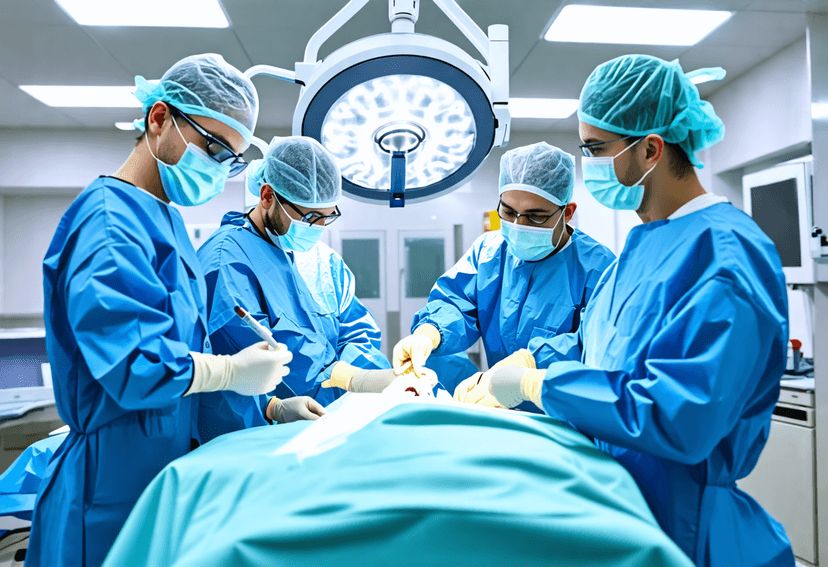
Revolutionizing Neurosurgery in Istanbul: NPISTANBUL Brain Hospital
NPISTANBUL Brain Hospital is leading the way in neurosurgery with
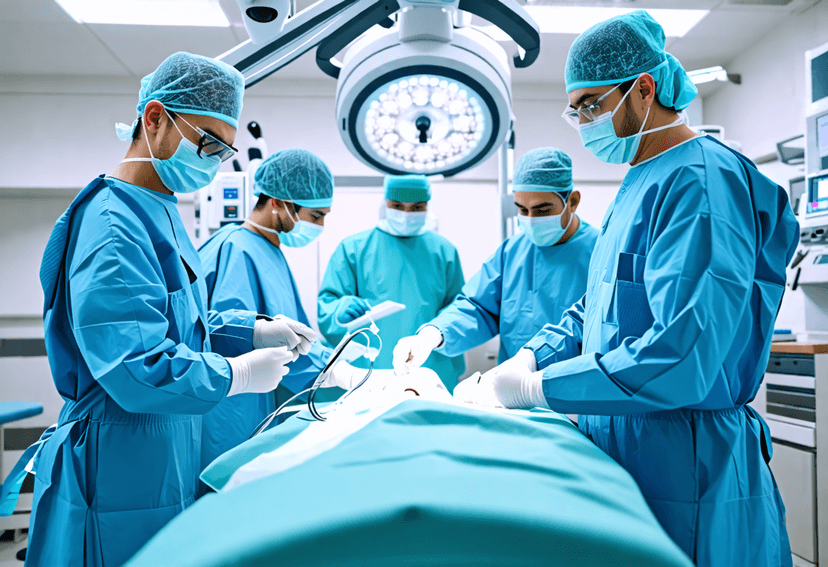
Discovering Saudi Arabia's Best Hospitals for Robotic Surgery
Mental health is crucial for mouth cancer patients. Learn about
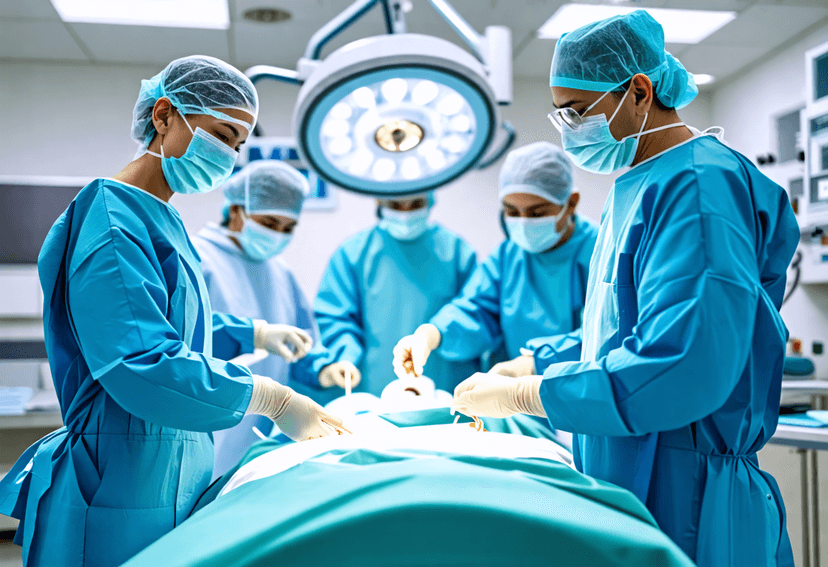
The Future of Healthcare: Robotic Surgery in India
Experience the future of surgery in India with robotic surgery
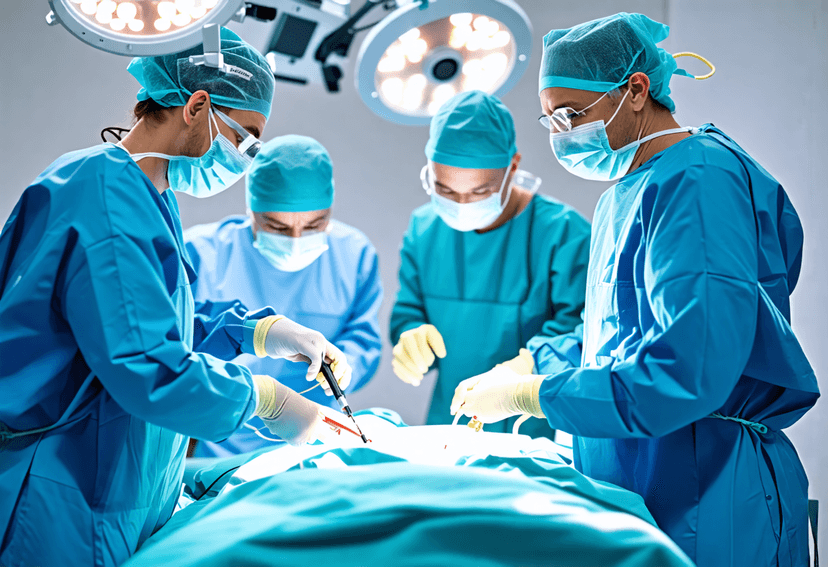
The Future of Surgery: Laparoscopic Robotic Surgery
Learn about the benefits of laparoscopic robotic surgery, a minimally
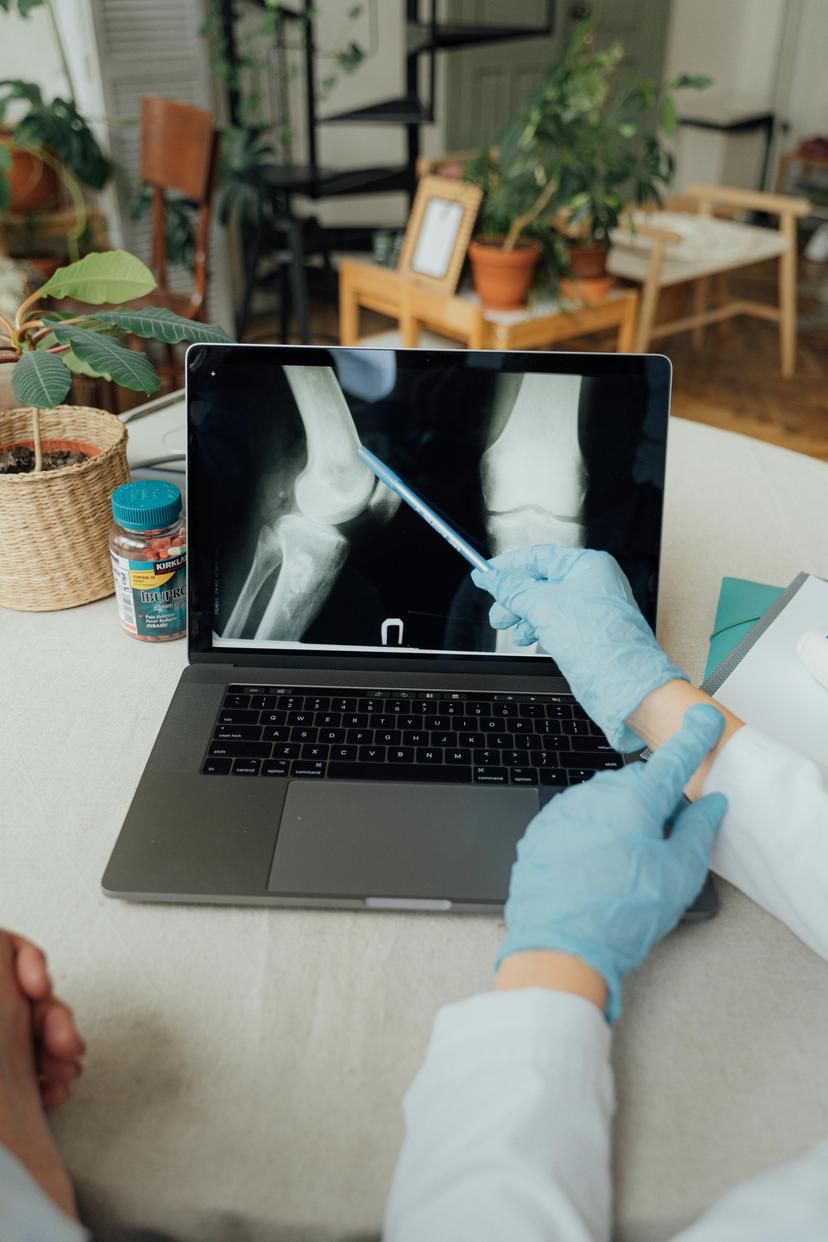
Robotic-Assisted Orthopedic Surgery: The Future is Here
Experience the precision of robotic-assisted orthopedic surgery
